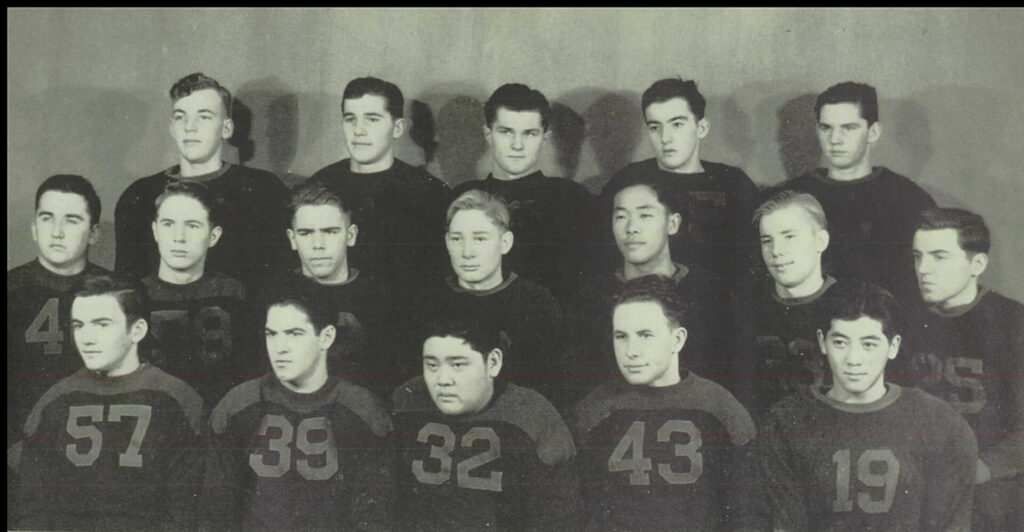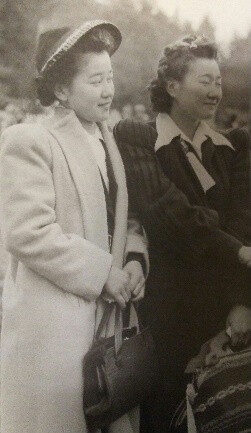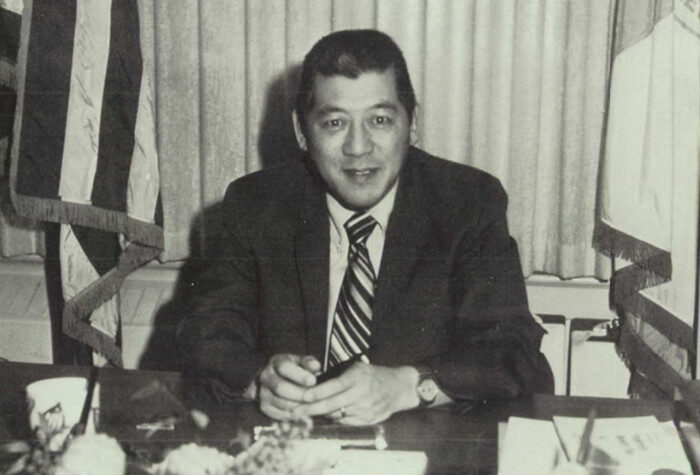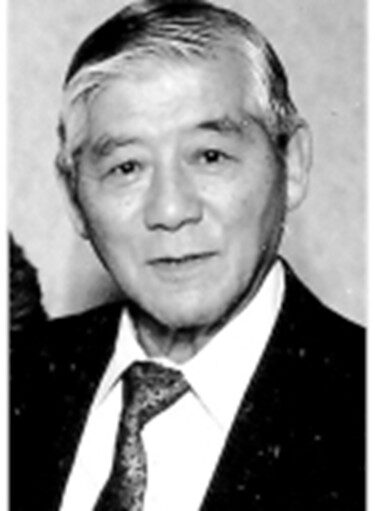Soldier Story: Albert Yoshio Ouchi
Soldier Story

Albert Yoshio Ouchi
Private First Class
442nd Regimental Combat Team
522nd Field Artillery Battalion, A Battery
Albert Yoshio Ouchi was born on October 21, 1922, in Seattle, Washington. He was the son of Kozo and Tayo (Oshima) Ouchi, who resided at 4008 Letitia Street. Kozo arrived from the village of Asakara, Fukuoka Prefecture, Japan, at the age of 17 on August 13, 1907, on the S.S. Minnesota. Albert had one sister, Margaret Miye, who was one year older. Mother Tayo died when Albert was three years old, on April 18, 1926. She died of toxemia of pregnancy (preeclampsia) and her unborn child did not survive.
By 1930, Frank Kozo and the children were living with his sister Toyo and her family – husband Teruzo Mimbu and son William Y. – at 3566 Dakota Street. Kozo was employed at a hotel. Al, as Albert was known, attended Franklin High School, where he was on the football team.
Below: 1939, Franklin High School’s second string football team. Al is front row, far right.

In 1940, the Ouchi family was still with the Mimbu family and William’s wife, Merry, at 4111 Rainier Avenue. Kozo was employed as a porter at a hotel. After graduating from Franklin High School, Al enrolled at the University of Washington in Seattle.
In the spring of 1942, his education was cut short – as the family was evacuated to the WCCA Assembly Center, Puyallup Fairgrounds (called “Camp Harmony”), after Executive Order 9066 was issued.
Albert registered for the draft on June 30, 1942, Local Board No. 2, Seattle. His address was Unit A-1-87, Camp Harmony. His father, K. Ouchi, same address, was listed as his point of contact. His home residence was 4111 Rainier Avenue, Seattle. He was 5’8” tall and weighed 152 pounds, with a scar on his right cheek.
A few months later, the family was moved to WRA Internment Camp Minidoka, Jerome, Idaho: Frank on September 4; Margaret and Albert on September 14. Margaret was released to attend school in Rochester, Minnesota, on October 9. Frank remained at Minidoka until September 4, 1945, when he was released to return home to Seattle.
On May 12, 1943, Albert was released to Camp Douglas, Utah, for induction into the U.S. Army. He was sent to the 442nd Regimental Combat Team at Camp Shelby, Mississippi. Once there, Ouchi was assigned to the 522nd Field Artillery Battalion, A Battery.
After a year of basic, combat, and specialty training and maneuvers, Al Ouchi left with the rest of the 442nd on April 22 for Camp Patrick Henry, Virginia. The Combat Team sailed to the Theater of War on May 2, 1944, from nearby Hampton Roads. Most of the ships arrived at Naples on the west coast of Italy on May 28. However, the 522nd arrived at Brindisi and Bari on the east coast of Italy the same day. The 522nd soldiers then travelled by rail boxcars to meet up with the rest of the 442nd at Naples.
The Battalion was at Staging Area No. 4 in Bagnoli, a bivouac near Naples, until June 6, when they sailed on LST 526 for the overnight trip to Anzio. Upon arrival, they climbed over the side and down on rope nets to the heaving swells below. From Anzio, on June 9 they were sent in a midnight truck convoy around the newly liberated city of Rome to a large bivouac near Civitavecchia.
They entered combat near Suvereto in the Rome-Arno Campaign on June 26. After driving the enemy north to the Arno River, on September 6 the 442nd was pulled from the lines and sent south to the port of Piombino, 14 miles from Suvereto. From Piombino they sailed to Naples on September 11. The 522nd sailed aboard the U.S.S. Richard K. Call, while the vehicles of the 522nd were driven to Naples by motor convoy. On September 27, the 522nd sailed on the U.S.S. Thurston from Naples to France. Upon arrival near Marseilles, they were transferred to LSIs (similar to LSTs) and landed on the beach in high seas, rain, wind, and mud. The next day, they were sent by rail boxcars and motor convoy to Battalion Area No. 51, a bivouac near Septèmes. During the 10-day stay in their bivouac, day passes to Marseille were issued and men also helped unload cargo at the port.
The 522nd fought in support of the 442nd during the Rhineland-Vosges Campaign. They left Septèmes by motor convoy on October 9 for the nearly 500-mile trip north to the Vosges Mountains. After two overnight halts, they arrived at the Seventh Army assembly area near Pouxeux on October 11. After going to two more assembly areas closer to the front, the attack began in the vicinity of Bruyères on October 14.
Pfc. Ouchi was in combat during the bitter fighting to liberate the important rail and road junction of Bruyères, neighboring Biffontaine and Belmont, and the “Rescue of the Lost Battalion” – the 1st Battalion, 141st (Texas) Infantry that had advanced beyond the lines and was surrounded on three sides by the enemy. Prior to the actual rescue of the 141st, the 522nd had “saved” them by correctly questioning the 36th Division commander on his firing orders. The 522nd forward observers noted that the firing coordinates were in the middle of the Lost Battalion’s position – so the coordinates were changed.
The weather was cold, wet, snowy, and miserable as the men fought in the heavily wooded forests still in their summer uniforms. They were subjected to living in water-logged foxholes, and incoming artillery raining down on them in “tree bursts.” Many 442nd soldiers contracted trench foot during these terrible weather conditions.
After the fierce fighting in the Vosges, the 442nd was at half-strength due to high casualties, and was sent to the south of France. There, they could rebuild to full combat strength while fighting in the Rhineland-Maritime Alps Campaign. This was primarily a mission of maintaining a defensive position to guard against enemy incursion from Italy to the east.
The 522nd left the lines on November 17 and moved to an assembly area near Cheniménil, eight miles southwest of Bruyères, and arrived near Nice on the Mediterranean coast on November 21. The 442nd was in the area of Nice, Menton, Sospel, L’Escarène, and Peira Cava, and they received replacements during this time. The period was relatively calm and was nicknamed the “Champagne Campaign” as the men were often given passes to Nice on the French Riviera. While there, the 522nd was mostly stationed in Sospel and, later, Menton. The drive to Sospel was 45 miles from the coast up steep, winding, narrow mountain roads.
The time in France ended when the 442nd RCT was sent back to Italy on March 22-25, 1945, for combat in the Po Valley Campaign. Commanders of the Fifth Army and the Seventh Army argued among themselves for the privilege of having the 522nd assigned to their commands in Italy or Germany. As it turned out, the 522nd Battalion was detached and sent to Germany for combat with the Seventh Army in the Central Europe Campaign, adding firepower to its assault on the Siegfried Line.
The 522nd left Menton on March 9 and drove 500 miles north, arriving on March 12. They crossed the Saar River into Germany at Kleinbittersdorf. For the next two weeks, the Battalion supported a breakthrough of the Siegfried Line, captured a German 150mm howitzer and used it against the enemy, supported the 45th Infantry Division’s crossing of the Rhine River near Worms, and captured 21 prisoners. The 522nd crossed the Rhine River in the middle of the night on March 27 on a treadway pontoon bridge.
During its seven weeks of combat in Germany, the 522nd was assigned to general fire support missions reinforcing the firing and assault advances of numerous units of the 7th Army driving the German forces toward the Austrian border, firing 15,219 rounds of artillery fire, making 52 different displacements covering 617 miles enroute. They were near Shaftlach in Bavaria, southern Germany, when the Germans surrendered on May 6, 1945.
During the occupation, the 522nd was stationed in and around the town of Donauworth on the Danube River. They performed the usual occupation duties and were often issued passes to visit such places as Hitler’s Eagles Nest, Konigsee, and Salzburg. By late November, all the men of the 522nd had been sent back to the States.
At some point during his combat service, Ouchi was wounded. He was treated and returned to duty but suffered hearing problems the rest of his life.
For his military service, Private First Class Albert Yoshio Ouchi was awarded the Purple Heart Medal, Good Conduct Medal, American Campaign Medal, European-African-Middle Eastern Campaign Medal with four bronze stars, World War II Victory Medal, and Army of Occupation Medal. He was awarded the Congressional Gold Medal on October 5, 2010, along with the other veterans of the 100th/442nd Regimental Combat Team. This is the highest Congressional Civilian Medal.
In January 14, 1946, he married Yoshie Terayama, in New York City. She was the daughter of Mr. and Mrs. Otozo Terayama of Bainbridge Island, Washington. They had met at Minidoka WRA Internment Camp, where she was incarcerated with her family on February 26, 1943, as a transfer from Manzanar WRA Internment Camp, California. Yoshie entered Manzanar on August 1, 1942. She was released to New York, New York, on July 5, 1945.

Yoshie (on the left)
They moved to Walla Walla, Washington, where Al attend Whitman College. He graduated in 1949 with a degree in Economics and Business Administration. His senior class photo is shown at the top of this bio. The following year, in April 1950, they were living at 1263 Boyer Avenue in Walla Walla with their first child.
After college, the family moved to Portland, Oregon, where Al worked as a Social Studies teacher at Franklin and Grant High Schools for the Portland School District.
Over the years, Al and Yo, as Yoshie was known, raised one daughter and one son. To supplement his teacher’s income, in the 1950s and early 1960s he drove a Grayline tour bus on the weekend, taking visitors all over the state. In 1967, Ouchi worked for the U.S. Department of the Interior to develop education programs for the Bureau of Indian Affairs. This included time as the Superintendent of Chemawa Indian School in Portland, Oregon.

Superintendent Ouchi, Chemawa’s “personable” leader, 1972
He later worked for the Bureau of Land Management’s Equal Employment Opportunity (EEO) Division. His final BLM assignment ended in Portland in 1988.
After retirement, Al and Yo enjoyed golfing, fishing, and travel. In 2008, Al received an Honorary Degree from the University of Washington in recognition of having been forced to leave the school in 1942.

Ouchi in later years
Yoshie died in 2007 in Portland and was buried in River View Cemetery. Albert Y. Ouchi died on May 2, 2013, in Portland, and was buried next to his wife. He was survived by two children, two grandchildren, and one great-grandson.
Researched and written by the Sons & Daughters of the 442nd Regimental Combat Team in 2024.